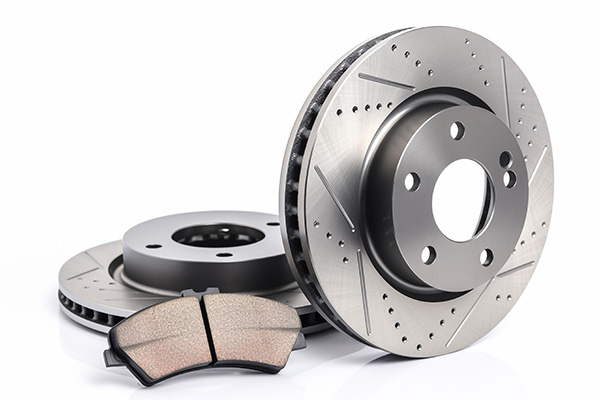
You're cruising down the road, wind in your hair, when suddenly you hear a screeching noise as you hit the brakes. You feel your heart skip a beat as you realize something might be wrong with your brakes. Brake rotors are an essential part of your vehicle's braking system, but they're often overlooked until they start causing problems.
What Are Brake Rotors
Brake rotors, also known as brake discs, are the round, metal discs that your brake pads clamp onto to stop your vehicle. They play a crucial role in slowing down or stopping your car safely. Over time, brake rotors can wear down due to friction and heat generated during braking. This wear and tear can lead to various issues if not addressed promptly.
Signs It's Time for a Change
Vibration or Pulsation
If you feel a vibration or pulsation when applying the brakes, it could be a sign that your brake rotors are warped or unevenly worn. This can occur due to excessive heat buildup or prolonged use without proper maintenance.
Screeching or Grinding Noises
If you hear strange noises like screeching or grinding while applying brakes, it might indicate that the brake pads have worn down. It can result in metal-to-metal contact between the rotors and brake pads. If you ignore these noises, it can lead to additional damage to the brake components and rotors.
Decreased Braking Performance
If your vehicle takes longer to come to a complete stop or if the brakes feel less responsive, it's time to inspect the brake rotors. Reduced braking performance can result from worn-out or damaged rotors that need replacement.
Consequences of Neglecting Brake Rotors
Worn or damaged brake rotors can compromise your vehicle's ability to stop quickly and safely. This can lead to accidents, especially in emergency situations where every inch counts.
Neglecting to replace worn brake rotors can strain other brake components, such as the brake pads and calipers. This can accelerate their wear and lead to more frequent and costly repairs down the road.
In extreme cases, severely worn or warped brake rotors can cause brake failure, making it impossible to stop your vehicle when needed. This can have catastrophic consequences, endangering your life and the lives of others on the road.
Preventive Maintenance Tips
Regular Inspections
Schedule routine inspections of your brake system, including the rotors, to detect any signs of wear or damage early on.
Replace Brake Pads As Needed
Replace worn brake pads before they cause damage to the rotors. Most experts recommend replacing brake pads every 30,000 to 70,000 miles, depending on driving habits and vehicle usage.
Quality Replacements
When replacing brake rotors, opt for high-quality, OEM (original equipment manufacturer) or aftermarket rotors to ensure reliable performance and longevity.
Are There Different Types of Brake Rotors?
When it comes to brake rotors, there isn't a one-size-fits-all solution. Different vehicles and driving styles may require different types of brake rotors to meet specific performance needs. Here are some of the most common types of brake rotors:
Standard Rotors
Also known as solid rotors, these are the most basic type of brake rotors found in most vehicles. They're made from solid cast iron and provide reliable stopping power for everyday driving conditions.
Slotted Rotors
Slotted rotors feature shallow grooves or slots machined into the surface of the rotor. These slots help dissipate heat and gasses generated during braking, improving overall braking performance and reducing brake fade. Slotted rotors are popular among performance enthusiasts and drivers who engage in spirited driving or towing.
Drilled Rotors
Drilled rotors have holes drilled into the surface of the rotor, typically in a pattern. Like slotted rotors, drilled rotors aid in heat dissipation and prevent brake fade by allowing hot gasses to escape more efficiently. However, drilled rotors are more prone to cracking under heavy use, making them less suitable for aggressive driving or track use.
Drilled and Slotted Rotors
These rotors combine the benefits of both drilled and slotted designs, offering improved heat dissipation and braking performance. They're commonly used in high-performance vehicles and applications where superior braking capabilities are essential.
Vented Rotors
Vented rotors feature internal vanes or fins that help dissipate heat more effectively than solid rotors. These rotors are commonly found on vehicles with higher horsepower and towing capacity, as they provide better thermal stability and reduce the risk of brake fade under heavy loads.
Composite Rotors
Composite rotors are made from a combination of materials, such as carbon fiber or ceramic, bonded to a metal core. Compared to traditional cast iron rotors, they offer significant weight savings, improved braking performance, and reduced brake fade. However, they come at a higher cost and are typically found in high-performance or racing applications.
If your brake rotors need to be changed, call Davenport Motor Company! We can also help with all other maintenance and repair tasks, so don’t hesitate to contact us.